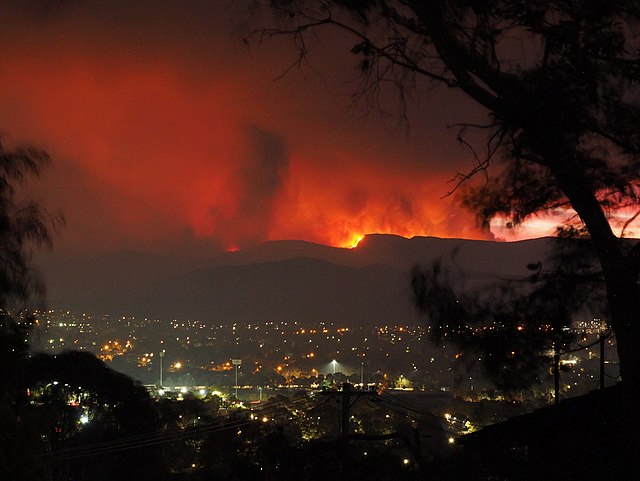Land change science refers to the interdisciplinary study of changes in climate, land use, and land cover. Land change science specifically seeks to evaluate patterns, processes, and consequences in changes in land use and cover over time. The purpose of land change science is to contribute to existing knowledge of climate change and to the development of sustainable resource management and land use policy. The field is informed by a number of related disciplines, such as remote sensing, landscape ecology, and political ecology, and uses a broad range of methods to evaluate the patterns and processes that underlie land cover change. Land change science addresses land use as a coupled human-environment system to understand the impacts of interconnected environmental and social issues, including deforestation and urbanization.
Imaging by NASA of the effects of deforestation on rainfall in Brazil, an example of land change science modeling
Remote sensing images show changes to the extent of the Aral Sea from 1989 (left) to 2014 (right).
Rainforest deforestation for land use conversion
An aerial image of New Delhi, India, one of the world's largest urban areas
In common usage, climate change describes global warming—the ongoing increase in global average temperature—and its effects on Earth's climate system. Climate change in a broader sense also includes previous long-term changes to Earth's climate. The current rise in global average temperature is primarily caused by humans burning fossil fuels. Fossil fuel use, deforestation, and some agricultural and industrial practices add to greenhouse gases, notably carbon dioxide and methane. Greenhouse gases absorb some of the heat that the Earth radiates after it warms from sunlight. Larger amounts of these gases trap more heat in Earth's lower atmosphere, causing global warming.
Sea ice reflects 50% to 70% of incoming sunlight, while the ocean, being darker, reflects only 6%. As an area of sea ice melts and exposes more ocean, more heat is absorbed by the ocean, raising temperatures that melt still more ice. This is a positive feedback process.
Different levels of global warming may cause different parts of Earth's climate system to reach tipping points that cause transitions to different states.
Ecological collapse. Coral bleaching from thermal stress has damaged the Great Barrier Reef and threatens coral reefs worldwide.
Extreme weather. Drought and high temperatures worsened the 2020 bushfires in Australia.








